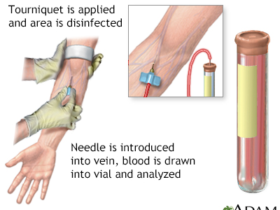Introduction to MPV in Blood Tests
Blood tests are essential diagnostic tools healthcare professionals use to assess various aspects of a patient’s health. One crucial parameter measured in these tests is the Mean Platelet Volume (MPV). Understanding MPV and its implications can provide valuable insights into an individual’s platelet function and overall health. This article delves into what is mpv in blood test signifies, the procedure for measuring MPV, and the clinical implications of high and low MPV levels.
Understanding MPV: What It Is and Why It Matters
Mean Platelet Volume (MPV) is a measurement that reflects the average size of platelets in the blood. Platelets, or thrombocytes, are small, disc-shaped cell fragments crucial for blood clotting and wound healing. MPV indicates platelet production and function, providing insight into various hematological conditions and systemic diseases.

The Role of Platelets in the Body
Platelets play a vital role in hemostasis, the process that stops bleeding at the site of an injury. When a blood vessel is damaged, platelets adhere to the site, aggregate with other platelets, and release chemical signals that promote clotting. This process is critical for preventing excessive blood loss and facilitating wound repair. Therefore, the size and functionality of platelets, as indicated by MPV, are of significant clinical interest.
The Procedure for Measuring MPV
The measurement of MPV is typically included in a Complete Blood Count (CBC) test, a routine blood test performed in many clinical settings. Here’s an overview of how the procedure is carried out:
Blood Sample Collection
A healthcare professional collects a blood sample, usually from a vein in the arm, using a sterile needle and syringe. The blood is then transferred into an anticoagulant tube to prevent clotting.
Laboratory Analysis
The collected blood sample is analyzed using an automated hematology analyzer. This device measures various blood parameters, including MPV, by evaluating the size and volume of platelets. The analyzer uses electrical impedance or optical methods to determine the mean platelet volume.
Interpretation of Results
The results are typically available within a few hours to a day. MPV values are reported in femtoliters (fL), with the usual range generally falling between 7.5 and 12 fL. However, reference ranges may vary slightly depending on the laboratory and the population being tested.
Clinical Significance of MPV: High and Low MPV Levels
MPV can provide valuable diagnostic and prognostic information. Abnormal MPV levels can indicate underlying health conditions and can help guide further diagnostic testing and treatment decisions.
High MPV: Causes and Implications
A high MPV indicates larger-than-average platelets. This condition can be associated with several physiological and pathological states:
Enhanced Platelet Production
High MPV can occur when the bone marrow produces platelets rapidly, releasing younger, more giant platelets into the bloodstream. This can be a compensatory mechanism for increased platelet destruction or consumption.
Inflammatory and Cardiovascular Conditions
Research has shown that elevated MPV levels are associated with inflammatory conditions, cardiovascular diseases, and thrombotic disorders. High MPV may indicate an increased risk of heart attack, stroke, and other vascular events due to the hyperactivity and aggregation potential of more giant platelets.
Bone Marrow Disorders
Certain bone marrow disorders, such as myeloproliferative neoplasms, can also lead to high MPV. These conditions involve abnormal proliferation of blood cells and can significantly alter platelet production and size.
Low MPV: Causes and Implications
A low MPV indicates smaller-than-average platelets, which can also be clinically significant:
Platelet Production Issues
Low MPV may result from impaired platelet production in the bone marrow. Conditions such as aplastic anemia or exposure to certain chemotherapy drugs can reduce platelet size and number.
Chronic Diseases
Chronic conditions, including liver disease and certain types of anemia, can also be associated with low MPV. These diseases can affect platelet production and lifespan, reducing MPV levels.
Thrombocytopenia
Thrombocytopenia, a condition characterized by low platelet count, can sometimes be accompanied by low MPV. This condition can result from various factors, including autoimmune diseases, infections, and certain medications.
Diagnostic and Prognostic Value of MPV
MPV is not just a standalone parameter but an integral part of a comprehensive diagnostic process. It can provide crucial clues when evaluating various medical conditions and help monitor treatment efficacy and disease progression.
MPV in Cardiovascular Risk Assessment
MPV has emerged as a potential marker for assessing thrombotic risk in cardiovascular health. Studies suggest that individuals with higher MPV levels are at increased risk of developing cardiovascular events such as myocardial infarction and ischemic stroke. Therefore, MPV can be used alongside other clinical parameters to stratify patients’ risk and guide preventive strategies.
MPV in Hematological Disorders
In hematology, MPV is a valuable parameter for diagnosing and monitoring blood disorders. For instance, in conditions like immune thrombocytopenia (ITP), MPV can help distinguish between different causes of thrombocytopenia and guide treatment decisions.
MPV in Inflammatory and Autoimmune Diseases
Elevated MPV levels have been observed in various inflammatory and autoimmune diseases, including rheumatoid arthritis and inflammatory bowel disease. MPV can serve as a marker of disease activity and help assess the effectiveness of anti-inflammatory treatments.
Factors Affecting MPV Levels
Several factors can influence MPV levels, making it necessary to interpret results in the context of the overall clinical picture:
Age and Gender
MPV levels can vary with age and gender. Studies have shown that MPV tends to increase with age, and there may be slight differences between males and females.

Medications
Certain medications, such as antiplatelet drugs and anticoagulants, can affect MPV. Therefore, the patient’s medication history must be considered when interpreting MPV results.
Lifestyle Factors
Lifestyle factors, including smoking, alcohol consumption, and physical activity, can also impact MPV levels. These factors should be considered when evaluating MPV in clinical practice.
Conclusion
Mean Platelet Volume (MPV) is a crucial parameter in blood tests that provides valuable insights into platelet function and overall health. By understanding what MPV in blood tests signifies, healthcare professionals can better diagnose and manage various medical conditions, from cardiovascular diseases to hematological disorders. The procedure for measuring MPV is straightforward, and interpreting high and low MPV levels can offer significant diagnostic and prognostic value. As with any medical test, it’s essential to consider MPV results in the context of the patient’s overall health and clinical history to make informed decisions about their care.
Also, Read The Following: Squamous Epithelial Cells in Urine.














Got a Questions?
Find us on Socials or Contact us and we’ll get back to you as soon as possible.